
2023 Royal Enfield Interceptor 650 Road Test Review: Chasing...
- Jun 20, 2023
- Views : 14226

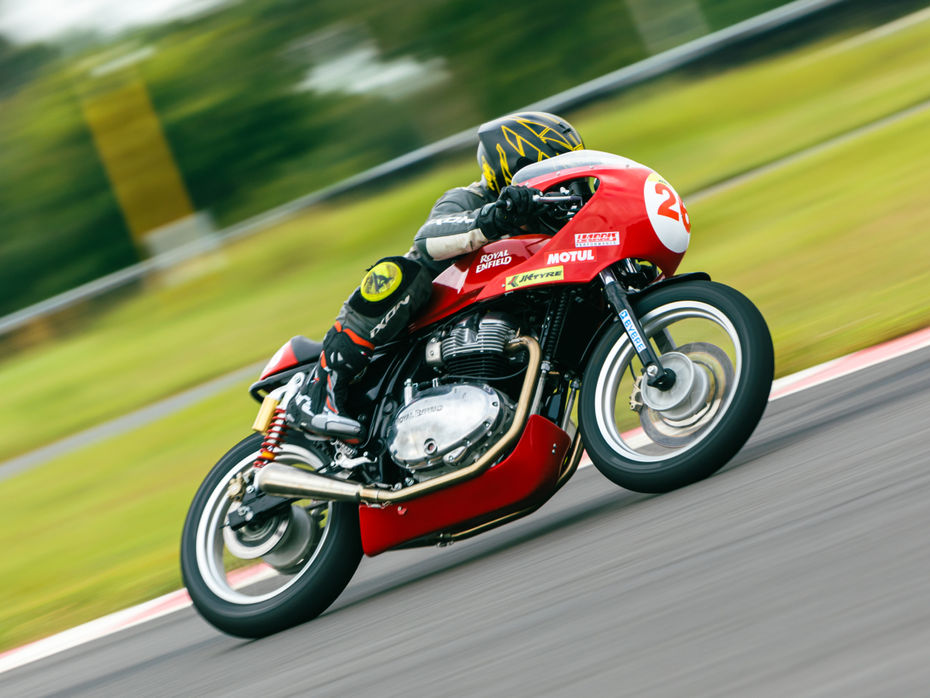
Lithe. Agile. Petite. These are the words you would normally associate with race motorcycles. Afterall, they have been developed for pure performance, shave off precious milliseconds and for winning, obviously. The Royal Enfield Continental GT-R650 does change perceptions of what a race bike should be. It isn’t lithe, petite or agile like other race motorcycles that I’ve had the good fortune to ride. In fact, it isn’t like any other race motorcycle I have ever ridden. And yet, after two 15-minute track sessions, I was eager to hop back on the saddle for more.

Cafe racers hold a special place in my heart. I have an old Royal Enfield Continental GT 535 in my garage that I rode quite a lot in my formative years, I loved my time astride the Triumph Thruxton R and when I first got to ride the Continental GT 650 in California, it was nothing short of a blast as we did the ton down the Pacific Coast Highway. Even when the Conti 650 became a part of our ZigFleet, I took it for a weekend spin first to Lavasa before handing over the keys to Manaal.
No wonder then, I was eager to ride this GT-R650 ever since they announced the series last year. Not because the GT-R650 was radically different from its road-going counterpart but because the changes are subtly tweaking its attitude from a warm and welcoming cafe racer to a serious retro racer.
And the best starting point for Royal Enfield and its crew of race engineers was to reduce the weight of the bike. In road-ready form, the Continental GT 650 tips the scales at 198 kilos. Getting rid of the chunky twin exhaust pipes for lighter free-flow exhaust systems was the first major modification done to reduce weight.
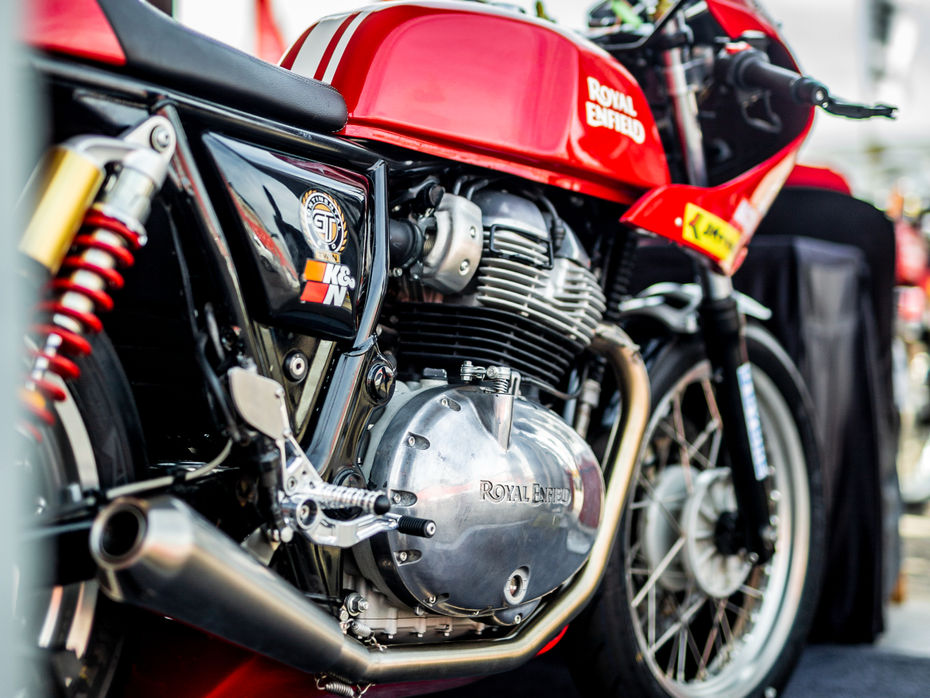
No chassis, swingarm or engine mods have been made. Royal Enfield officials stated that there’s a lot that can be done to make the bike lighter and faster. However, the objective of the racing series is to provide a level-playing ground for all racers without making it too complicated or compromise on the reliability of the bikes.
Making the bike reliable was crucial. Having 25 bikes running smoothly for 12 races without a hiccup is no mean feat. Hence, the more you tinker, more are the chances of issues propping up.
Custom aluminium parts from Harris Performance enable the rider to tweak the touchpoints to suit their riding style are now present on the bike. With the learnings of the first season, several small improvements to the suspension and braking have also been executed. Lastly, the bikes are now running on specially-developed JK Tyre Blaze rubber. These are different from the JK-badged tyres that the series was running last year.
With the retro-fairing on, the Conti GT-R650 is the most stunning race Indian bike. So, when we didn’t get to ride it on Saturday, I was sulking like a toddler whose candy had been taken away from him. Instead, we were going to be left on our own super early the following morning.
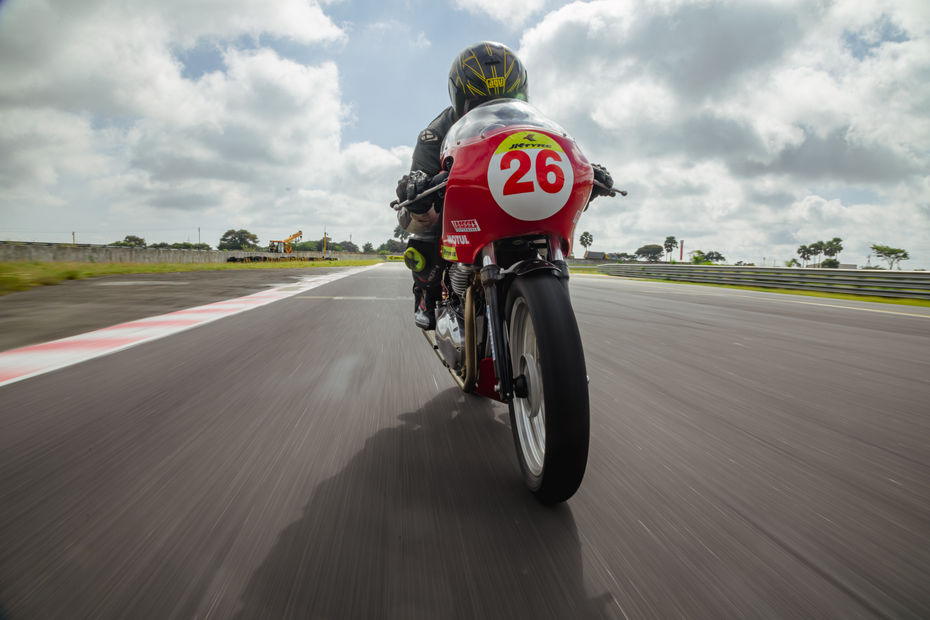
Even after shedding countless kilos, the GT-R650 remains a heavy motorcycle. Its long wheelbase and sport bike-rivalling steering geometry has been somewhat of a concern for the road. On a track, it shouldn’t. Plus, the triple clamps have been lowered further to increase its agility.
However, it didn’t seem that way as I rode the bike out of the pits. It felt difficult to tip into a corner, you had to muscle it back up and direction changes weren’t effortless. This happened for a lap, and another, and another. I dove back into the pits, befuddled. Something felt off. Usually, it turns out to be something pretty basic. And it was this time around as well: tyre pressures.
The front tyre wasn’t quite inflated to handle my heft and hence felt a little jittery at times. A bit more air was pumped into the tyre and off I went. Then, it started behaving more naturally, more like a race bike.
And yet still, it wasn’t like any other race bike I have ridden. Given the new start-stop car racing-biased track layout of the Kari Motor Speedway, finding a sense of rhythm astride the GT-R650 was difficult. It was quick out of the box and you did get the sense that this is faster than its road-going counterpart.
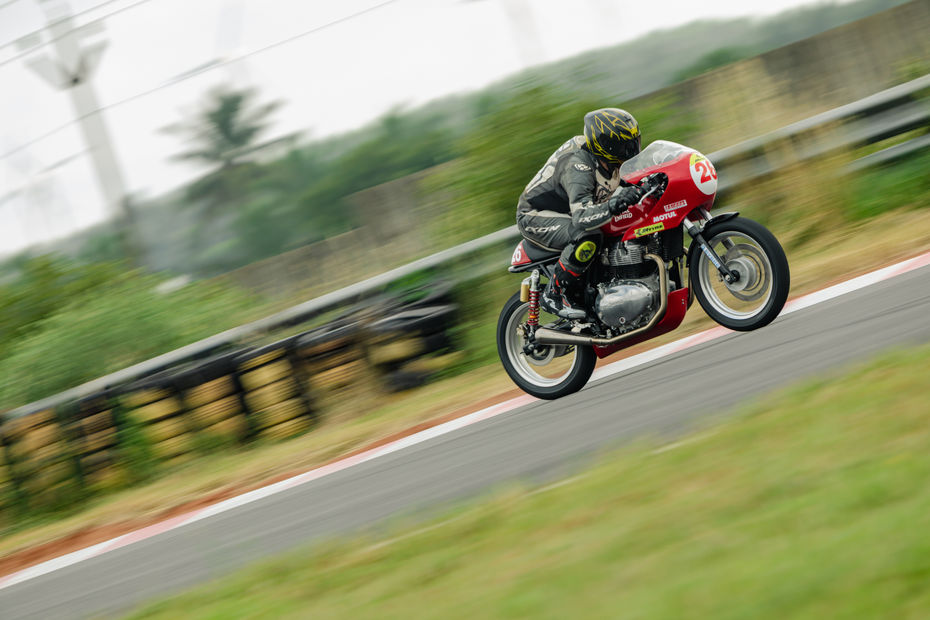
However, overcoming the laws of inertia takes some muscle. Bringing this stunning beast to halt requires mental fortitude. Go on the brakes a bit too soon and you will not be able to carry the required momentum through a corner. Brake a little late and you often end up running wide and overshooting the corner. So, finding the right braking marker, especially for the new C1-C2 chicane section, was more crucial on this race machine, as it primarily determined how well the rest of the lap was going to be.
And the job gets even harder as you point the bike towards the apex. All the kilos meant that you really had to push the bars with extra might just so as to get your turning just right. And once it was down, switching directions was just as tedious. I imagined it to be a tiresome affair but just by the end of the first 15 minute session, I was profusely sweating inside my helmet and was quite knackered. That’s where Obi-Wan Bhatena came in.
Being one of the key pillars behind the success of the first season of the Conti Cup, Aspi Bhatena is a man who is well known amongst racers and the automotive industry. Don’t let his age fool you, the man is still quite capable of running rings around young punks. Aspi has set up every single one of the bikes that line up the grid of the Conti Cup. His task has been to tweak the bike the right way so that it remains a level playing field for all riders, so that good talent comes to the fore.
It was but natural for me to go seek his aid after what was frankly a disheartening first session. In his usual curt and lovingly stern Parsi tone, he gave me a few pointers why the bike was behaving like the way it was and why it needed a different input into certain corners than other bikes.
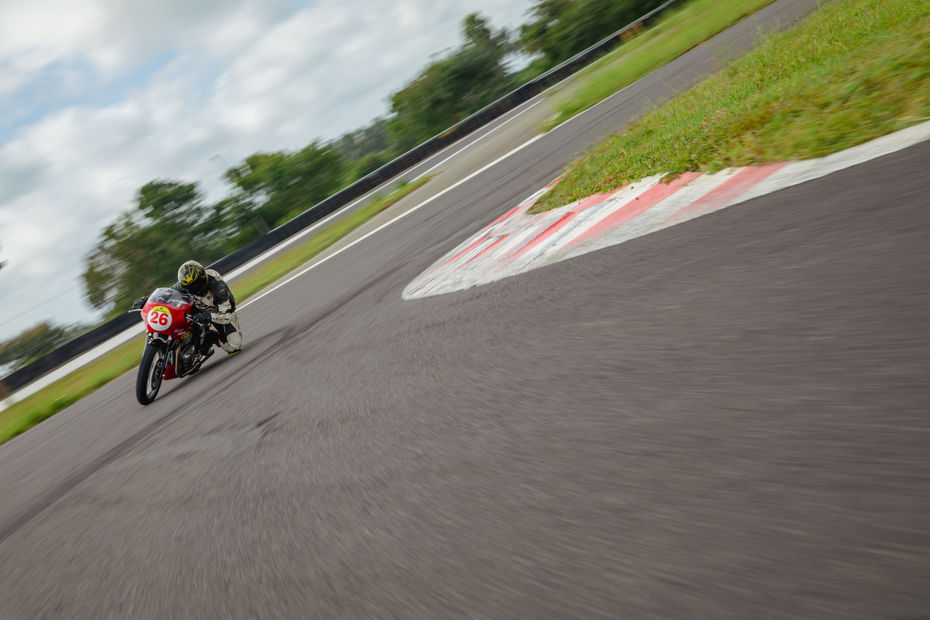
For instance the final corner at Kari, it is a deceiving hairpin bend that one would aim for a late apex to shoot out quicker on to the main straight. However, I couldn’t quite muscle the Conti GT-R650 to align it quite the way it is supposed to. Aspi’s technique was rather simple, start going even wider at the entry and commit to getting down the straight faster rather than making that apex. Sounds weird, right?
However, as I started the second session, I tried the trick and voila! It worked. So much so that I started adopting this method for a few other corners as well and I started to bring out my best moments with the bike.
The end to the session was contrasting to the first. Yes, I was still sweating buckets but I wasn’t as drained. At the end, it was about keeping as smooth and trying to be as flowy as possible around the now stop-start Kari track.
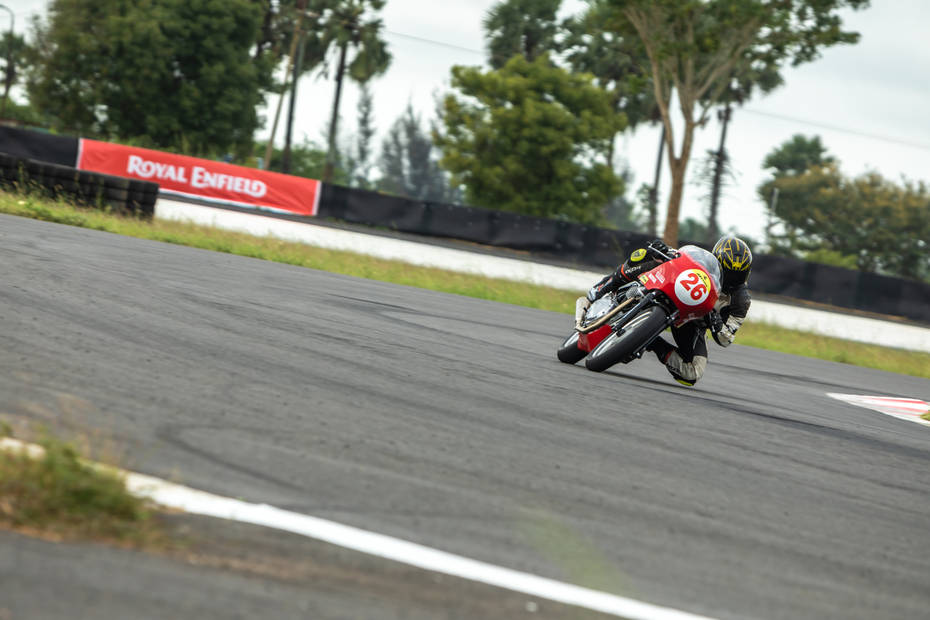
As I began tearing out of my leathers in the sweltering heat of Coimbatore, a flashback of my best, and not-so-best, moments started playing in my head. It was an experience and something that I would happily want to do once again.
The GT-R650 is a demanding companion with a bold personality. However, it is just as influential and memorable as some of the other petite and modern race bikes that zoom around our nation’s race tracks. And it does that by looking oh so gorgeous.
Photography by Kaizad Adil Darukhanawala
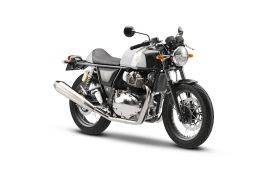

2023 Royal Enfield Interceptor 650 Road Test Review: Chasing...

Ceat SportRad Tyres 5,000km Review, on KTM 390 Duke

Raida AirWave Motorcycle Riding Gloves Review

2024 KTM 390 Duke Road Test Review: Unleashing The Madness

2024 KTM 390 Duke First Ride Review - Best 390 Duke Ever!

Royal Enfield Super Meteor 650 7,000km Long-term Report: The Perfect...

Royal Enfield Super Meteor 650 Interstellar vs Celestial: Which...

Royal Enfield Super Meteor 650 Real-world Test: Surprisingly...

Royal Enfield Super Meteor 650 First Ride Review: Highway Star

Which Royal Enfield 650cc Bike Suits Your Vibe? | Roadster, Cafe...
 Jawa Perak
Jawa Perak
 Royal Enfield Interceptor 650
Royal Enfield Interceptor 650
 KTM Duke 390
KTM Duke 390
 Royal Enfield Super Meteor 650
Royal Enfield Super Meteor 650
 Aprilia RS 457
Aprilia RS 457
India's largest automotive community
 Royal Enfield Classic 350
Rs. 1.93 Lakh
Royal Enfield Classic 350
Rs. 1.93 Lakh
 Royal Enfield Hunter 350
Rs. 1.49 Lakh
Royal Enfield Hunter 350
Rs. 1.49 Lakh
 Royal Enfield Bullet 350
Rs. 1.73 Lakh
Royal Enfield Bullet 350
Rs. 1.73 Lakh
 Royal Enfield Meteor
Rs. 2.05 Lakh
Royal Enfield Meteor
Rs. 2.05 Lakh
 Royal Enfield Himalayan 450
Rs. 2.85 Lakh
Royal Enfield Himalayan 450
Rs. 2.85 Lakh